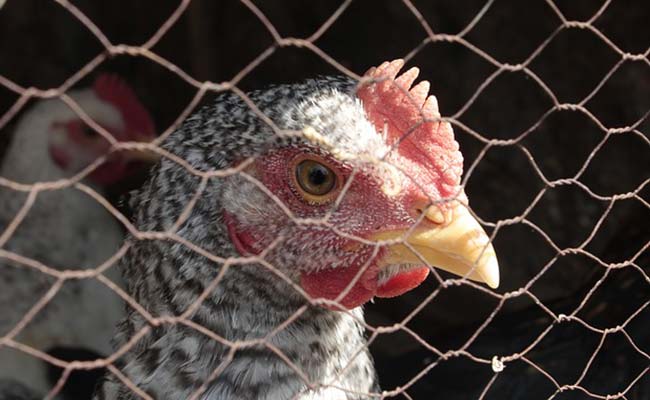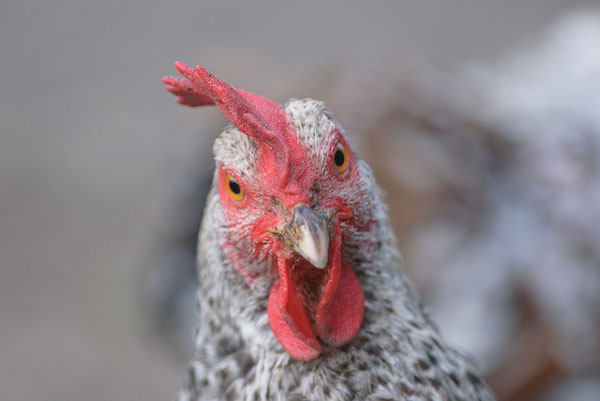Animal husbandry refers to the practice of selectively breeding and raising animals for profit, that is for food or other products derived from their body parts. This is also known as animal agriculture; although the latter is generally used to describe factory farming rather than organic or small holding farming.
While animal husbandry has played a crucial role in human history, it is an arguably unnecessary practice in developed countries today. However, due to its profitability and the employment it provides, and its cultural significance, it continues to grow.
While the main objection to animal husbandry is of course animal exploitation, there is rarely discussion around disease. The farming of animals has been, and continues to be, a huge threat to human health and survival.
This unnatural breeding of animals in close proximity presents a serious risk of disease to both animals and humans, thus the need for excessive use of antibiotics in animal agriculture (1).
Given the recent pandemic, one would have thought that our reliance on animal husbandry for food and products would be at the forefront of debate. Public health officials know full well the risks posed to humanity by animal agriculture, but this taboo subject remains the elephant in the room (2).
Throughout history, there have been numerous pandemics caused by diseases transmitted from animals to humans (known as zoonotic disease). These pandemics have had significant impacts on global health and have resulted in significant morbidity and mortality.

Pandemics Caused by Animal Husbandry & Eating Animals
Here is a brief overview of pandemics caused by zoonotic disease, as a result of breeding or eating animals.
1. HIV/AIDS
HIV, the virus that causes AIDS, is said to have originated in primates and was transmitted to humans through contact with infected blood or other bodily fluids. It is said to have killed 40 million people to date.
HIV weakens the immune system, making it more difficult for the body to fight off infections and diseases. HIV/AIDS has caused a global pandemic and is one of the leading causes of death worldwide.
2. H1N1 (Swine Flu)
H1N1 is a strain of influenza that was transmitted from pigs to humans and caused a global pandemic in 2009, resulting in approximately 300,000 deaths, though some statistics put this figure closer to 500,000.
H1N1 is a respiratory illness that can cause symptoms such as fever, cough, body aches, and fatigue. It is spread through respiratory droplets produced when an infected person talks, coughs, or sneezes.
3. SARS (Severe Acute Respiratory Syndrome)
SARS was caused by a virus that was transmitted from civet cats to humans. These cats are regarded as a delicacy in southern China. It caused a global outbreak in 2002-2003, resulting in over 8,000 cases and over 700 deaths.
SARS is a respiratory illness that can cause severe symptoms, including fever, cough, and difficulty breathing.
4. MERS (Middle East Respiratory Syndrome)
MERS is caused by a virus that is transmitted from camels to humans. It has caused outbreaks in the Middle East and elsewhere, resulting in over 2,500 cases and over 850 deaths.
MERS is a respiratory illness that can cause severe symptoms, including fever, cough, and difficulty breathing.
5. COVID-19
COVID-19 is caused by a virus called SARS-CoV-2, which is thought to have originated in bats and was transmitted to humans through an intermediate animal host, possibly pangolins. This is inconclusive, though.
Another credible theory is that it may have originated in bats and then spread from a laboratory that was studying and experimenting with the virus.
COVID-19 caused a global pandemic that began in late 2019 and began to simmer down in 2021. To date, the death toll is said to be in the region of 7 million worldwide.
COVID-19 is a respiratory illness that can cause symptoms such as fever, cough, and difficulty breathing. It is spread through respiratory droplets produced when an infected person talks, coughs, or sneezes.
6. 1918 Flu Pandemic (Spanish Flu)
The 1918 flu pandemic (H1N1 virus) infected one third of the world's population and killed an estimated 50 million people. While the transmission trigger for the outbreak is still debated, the virus is of avian origin (3).

These are just a few examples of pandemics caused by zoonotic diseases. There have been many other such pandemics throughout history, and there is ongoing concern about the potential for future pandemics caused by zoonotic disease.
One way to reduce the risk of zoonotic disease is to stop farming animals and eating meat. In addition, one should practice good hygiene when interacting with animals, such as washing hands frequently and avoiding close contact with sick animals.
21 Zoonotic Diseases That Pose a Threat to Human Health
The breeding, slaughter and eating of animals poses an ever-present risk to human health. Aside from the potential for future pandemics to occur, there are numerous diseases that pose a threat to human health.
Here are some common diseases that cause illness, and in some cases death, as a direct result of animal husbandry.
1. Salmonella
Salmonella is a bacterial infection that can be transmitted to humans through contact with infected animals or contaminated animal products, such as meat, eggs, and milk. Salmonella can cause symptoms such as fever, diarrhea, and abdominal cramps, and it can be serious, especially in young children, elderly people, and those with weakened immune systems.
2. E. Coli
E. Coli is a bacterial infection that can be transmitted to humans through contact with infected animals or contaminated animal products, such as meat, eggs, and milk. E. coli can cause symptoms such as abdominal cramps, diarrhea, and fever, and it can be serious, especially in young children, elderly people, and those with weakened immune systems.
3. Avian Influenza
Avian influenza, also known as bird flu, is a viral infection that affects birds, especially chickens and turkeys. It can be transmitted to humans through contact with infected birds or contaminated bird products, such as eggs. It can cause symptoms such as fever, cough, and body aches, and it can be serious, especially in those with weakened immune systems.
4. Bovine Spongiform Encephalopathy (BSE)
BSE, also known as mad cow disease, is a neurological disease that affects cattle. It is caused by a prion, a type of protein that can cause abnormal folding and aggregation of brain proteins. BSE can be transmitted to humans through consumption of contaminated meat or through contact with infected tissues. It can cause a similar condition called variant Creutzfeldt-Jakob disease (vCJD) in humans.
5. Bovine Tuberculosis
Bovine tuberculosis is a bacterial infection that affects cattle. It can be transmitted to humans through contact with infected animals or contaminated animal products, such as milk and cheese. It can cause symptoms such as fever, weight loss, and fatigue, and it can be serious if left untreated.
6. Classical Swine Fever
Classical Swine Fever, also known as hog cholera, is a viral disease that affects pigs. It can be transmitted to humans through contact with infected pigs or contaminated pig products, such as meat. It is not known to cause disease in humans, but it can be transmitted to humans and may cause mild symptoms such as fever and muscle aches.
7. Foot-and-Mouth Disease
Foot-and-Mouth Disease is a viral disease that affects cloven-hoofed animals, such as cattle, sheep, and pigs. It can be transmitted to humans through contact with infected animals or contaminated animal products, such as meat. It can be transmitted to humans and may cause mild symptoms such as fever and sore throat.
8. Listeriosis
Listeriosis is a bacterial infection that can be transmitted to humans through contaminated animal products, such as meat and dairy products. It can cause symptoms such as fever, muscle aches, and diarrhea, and it can be serious, especially in pregnant women, newborns, and those with weakened immune systems.
9. Leptospirosis
Leptospirosis is a bacterial infection that can be transmitted to humans through contact with contaminated water or soil, or through contact with infected animals, such as rats and cows. It can cause symptoms such as fever, headache, and muscle aches, and it can be serious if left untreated.
10. Brucellosis
Brucellosis is a bacterial infection that can be transmitted to humans through contact with infected animals or contaminated animal products, such as milk and cheese. Brucellosis can cause symptoms such as fever, fatigue, and muscle aches, and it can be serious, especially in those with weakened immune systems.
11. Q Fever
Q Fever is a bacterial infection that can be transmitted to humans through contact with infected animals, such as cows, goats, and sheep. Q Fever can cause symptoms such as fever, headache, and muscle aches, and it can be serious, especially in those with weakened immune systems.
12. Fowlpox
Fowlpox is a viral infection that affects birds, especially chickens and turkeys. It can be transmitted to humans through contact with infected birds or contaminated bird products, such as eggs. It can cause symptoms such as fever, fatigue, and skin lesions, and it can be serious, especially in those with weakened immune systems.
13. Newcastle Disease
Newcastle Disease is a viral infection that affects birds, especially chickens and turkeys. It can be transmitted to humans through contact with infected birds or contaminated bird products, such as eggs. It can cause symptoms such as fever, fatigue, and respiratory symptoms, and it can be serious, especially in those with weakened immune systems.
14. Toxoplasmosis
Toxoplasmosis is a parasitic infection that can be transmitted to humans through contaminated animal products, such as raw or undercooked meat, or through contact with infected cats. It can cause symptoms such as fever, muscle aches, and swollen lymph nodes, and it can be serious, especially in pregnant women, newborns, and those with weakened immune systems.
15. Campylobacteriosis
Campylobacteriosis is a bacterial infection that can be transmitted to humans through contaminated animal products, such as raw or undercooked poultry. It can cause symptoms such as diarrhea, abdominal cramps, and fever, and it can be serious, especially in young children, elderly people, and those with weakened immune systems.
16. Taeniasis
Taeniasis is a parasitic infection that can be transmitted to humans through consumption of undercooked or contaminated pork. It can cause symptoms such as abdominal pain, diarrhea, and weight loss, and it can be serious if left untreated.
17. Trichinellosis
Trichinellosis is a parasitic infection that can be transmitted to humans through consumption of undercooked or contaminated pork. It can cause symptoms such as abdominal pain, diarrhea, and muscle aches, and it can be serious if left untreated.
18. Scrapie
Scrapie is a neurological disease that affects sheep and goats. It is caused by a prion, a type of protein that can cause abnormal folding and aggregation of brain proteins. Scrapie can be transmitted to humans through consumption of contaminated meat or through contact with infected tissues and may cause a similar condition called variant Creutzfeldt-Jakob disease (vCJD).
19. Anthrax
Anthrax is a bacterial infection that can be transmitted to humans through contact with infected animals or contaminated animal products, such as wool, hides, and meat. It can cause symptoms such as fever, fatigue, and skin lesions, and it can be serious if left untreated.
20. African Swine Fever
African Swine Fever is a viral disease that affects pigs. It can be transmitted to humans through contact with infected pigs or contaminated pig products, such as meat. It is not known to cause disease in humans, but it can be transmitted to humans and may cause mild symptoms such as fever and muscle aches.
21. Ebola
Ebola is a viral disease caused by the Ebola virus. It is a rare and highly infectious disease that primarily affects humans and nonhuman primates, such as monkeys, gorillas, and chimpanzees.
The virus is transmitted to people through close contact with the blood, secretions, organs, or other bodily fluids of infected animals, and can also be spread to humans through close contact with the blood, secretions, organs, or other bodily fluids of infected humans.
Symptoms of Ebola include fever, headache, muscle pain, weakness, fatigue, diarrhea, vomiting, abdominal pain, and unexplained hemorrhage (bleeding or bruising). The disease can lead to severe illness and death, with a case fatality rate of up to 90%. There is currently no specific treatment for Ebola, and care is primarily supportive.
In Summary
Not all zoonotic diseases pose a threat to human life, and most are treatable if diagnosed early on. However, our continued eagerness to to defy and exploit nature only seeks to increase the risk of future endemic and pandemic outbreaks.
The less we interfere with the lives of animals the lower the risk of deadly disease transmission becomes. Conversely, breeding and slaughtering animals on a mass scale creates a disease-promoting environment that presents a high-risk of spread an infection.
Furthermore, we can lower the risk of zoonotic disease from wild animals such as bats, monkeys and birds by reducing our encroachment on their environments.
Given the high risk factor, and the warnings given to us by nature thus far, surely it is time to stop farming animals?




Leave a Reply